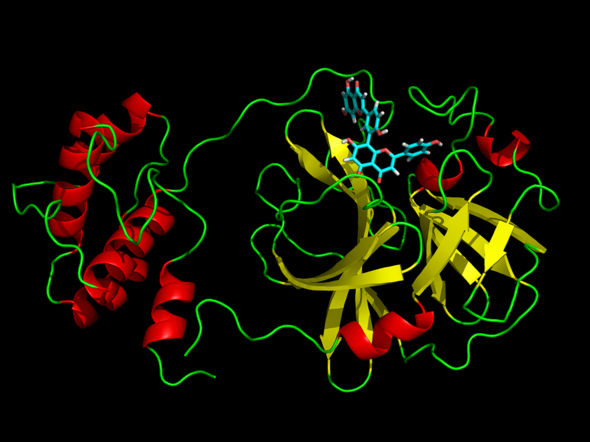Natural compounds that inhibit the main protease of the SARS-CoV-2 virus discovered by virtual screening
Fighting the COVID-19 Pandemic
The fight against the Covid-19 pandemic is an international scientific challenge to find strategies to combat the viral infection and prevent its consequences. In addition to vaccines and drugs approved by health authorities, it is vital to find new treatments to fight the viral infection once it has occurred.

This new scientific advance is based on the use of virtual (in silico) screening, a computational analysis technique to select candidate molecules for future drug candidates in a chemical library.
Universidad de Barcelona
A study published in the Journal of Chemical Information and Modeling has identified a number of natural products that are able to inhibit Mpro, the main protease of the SARS-CoV-2 virus. Mpro is a non-structural protein that plays an essential role in the replication and transcription of this virus, and is considered a potential therapeutic target, since, if it could be inhibited, it could prevent the progression of the virus.
The work is led by Professor Jaime Rubio Martínez, from the Faculty of Chemistry and the Institute of Theoretical and Computational Chemistry (IQTC) of the University of Barcelona, and may open new perspectives for designing new therapeutic strategies in the fight against COVID-19. This new scientific advance is based on the use of virtual screening(in silico), a computational analysis technique of molecules stored in databases to identify and select candidate compounds of potential pharmacological interest.
Virtual screening: in search of future drugs
Today, the clinical approach to COVID-19 consists of symptomatic treatment with anti-inflammatory agents (e.g., dexamethasone or cytokine inhibitors) combined with antibiotics to treat secondary infections. More recently, the antiviral ritonavir has also been approved, but there is still a need for new drugs. In the context of global health, there is an urgent need to develop targeted antiviral therapies against SARS-CoV-2, which has led to the initiation of various strategies to identify bioactive compounds that can be used as therapeutic agents (including available drugs and natural products). In this context, virtual screening is a reliable, rapid and efficient procedure to discover bioactive compounds from large chemical collections against a specific molecular target or target.
In the framework of this work, the team has carried out a virtual screening of the Selleck database of natural products - a chemical library with about 2,000 compounds - for a set of various configurations of the SARS-CoV-2 virus Mpro protease, characterized from a molecular dynamics study.
As a result, the work first presents the characterization of the dynamic profile of the Mpro protease in the apo form by conventional (cMD) and Gaussian accelerated molecular dynamics (GaMD) simulations, and defines a series of representative structures. These structures were subsequently used to carry out molecular assembly, a bioinformatics method that allows predicting and calculating with computational techniques the most favorable position of interaction between a ligand and its target protein. Then, an iterative process was developed to increase the length of the cMDs of the protein-ligand complexes and to calculate the binding free energy to select the most promising candidates.
Based on the results, eleven compounds were selected and tested in vitro for their ability to inhibit Mpro protease. Finally, from the final set, five SARS-CoV-2 antiviral candidates, Mpro protease inhibitors, were identified from the natural products database.
Note: This article has been translated using a computer system without human intervention. LUMITOS offers these automatic translations to present a wider range of current news. Since this article has been translated with automatic translation, it is possible that it contains errors in vocabulary, syntax or grammar. The original article in Spanish can be found here.



















































